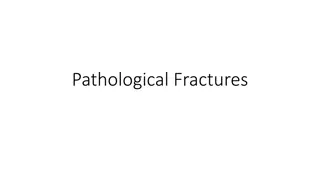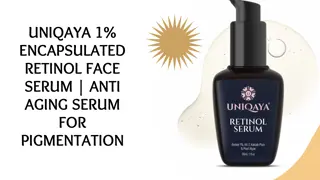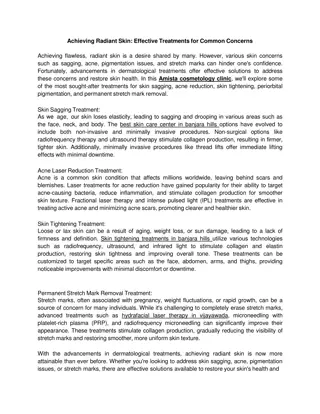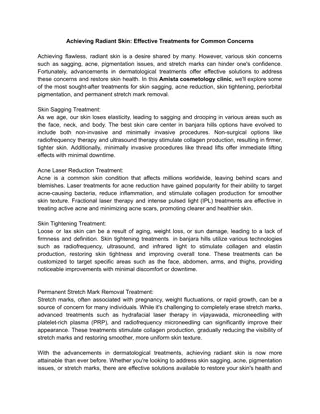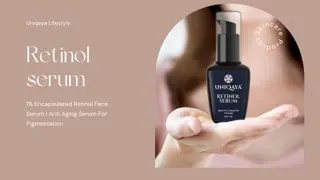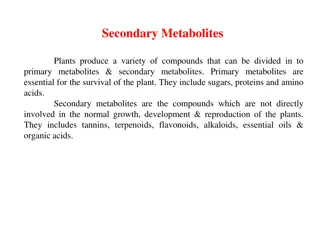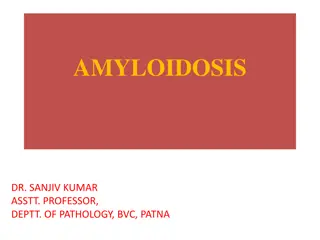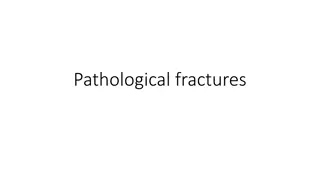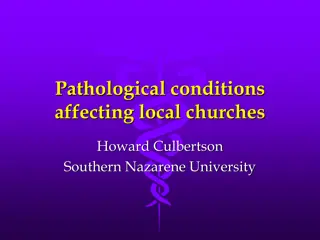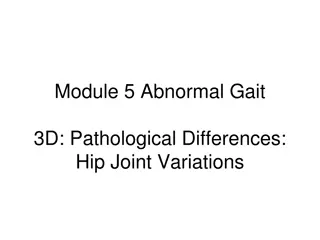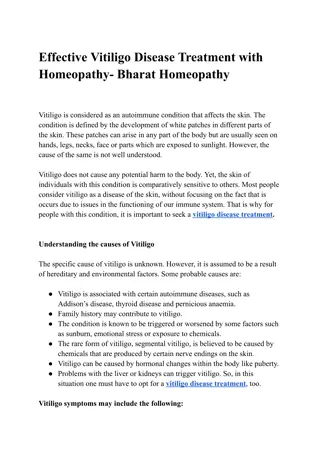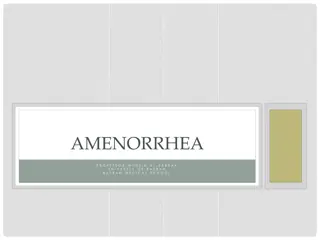Understanding Pathological Pigmentation: Causes and Effects
Pathological pigmentation involves the abnormal deposition of pigments in the body. It can be classified as exogenous or endogenous, with various sources and types of pigments. Melanin, one of the endogenous pigments, plays a crucial role in determining tissue color and can have protective functions in different organisms. Different pigments have diverse effects on tissues, ranging from harmless to causing tissue injury and fibrosis.
Download Presentation

Please find below an Image/Link to download the presentation.
The content on the website is provided AS IS for your information and personal use only. It may not be sold, licensed, or shared on other websites without obtaining consent from the author. Download presentation by click this link. If you encounter any issues during the download, it is possible that the publisher has removed the file from their server.
E N D
Presentation Transcript
PATHOLOGICAL PIGMENTATION Lecture by Assistant Professor Dr. Jihad A. Ahmed
PATHOLOGICALPIGMENTATION This is defined as deposition of inherently coloured substances(pigments) in aberrant locations or in excessin locations normallyfound. Classification of pigments Pigments are classified according to their originas: 1. Exogenouspigments. 2. Endogenous pigments. 1. Exogenous pigments Originate from outside the body, entering the body through the skin, lungs or intestines and being deposited in macrophages of regional lymph nodes Some of the exogenous pigments undergo modification in the tissues e.g. mercury, which is converted to mercuric sulphide responsible for mercurial pigmentation
Effects of exogenous pigments Some exogenous pigments like carbon dust cause little or no harm in the tissues Others like silica, asbestos and iron produce tissue injury associated with extensive inflammatory reaction and healing by fibrosis The general pathological term for such lesion in the lungs due to inhalation of irritant elements is pneumoconiosis 2. Endogenous pigments Endogenous pigments are further classified into four types based on their source of formation in the body:
Source of endogenous pigments in the body andthe specific pigments derived from eachsource Melanocytes Melanin Haemoglobin Hemosiderin Hematin Bilirubin Porphyrins Porphyrin Lipids Lipofuscin Ceroid
1. Melanin The pigment is produced in the skin by melanocytes located at the junction between the epidermis and the dermis The melanocytes have branching processes through which melanin granules(melanosomes) are transferred to keratinocytes in the epidermis The process of formation of melanin is called melanization The concentration of melanin in tissues determines the colour of the tissue
Melanin(cont.) In low concentrations, melanin appears yellow- brown, whereas in large quantities black In other situation, its dispersion may be that it appears blue or green e.g. in the sexual skin of some baboons Fish have additional reflecting cells called iridocytes, which contain guanin instead of melanin responsible for beautiful metallic sheen of many fish There are two types of animal melanin: brown to black insoluble called eumelanin and yellow to reddish brown soluble called pheomelanin The function of melanin is largely protective e.g. in chameleons, and in man against sunlight
Melanization Melanoblasts in the skin differentiate into: Melanocytes, which contain an amino acid tyrosine Tyrosine is oxidized to dioxyphenylalanine(DOPA) under the catalytic activity of enzyme tyrosinase DOPA is changed into melanosomes Melanosomes are sent to keratinocytes
Pathological conditions resulting from abnormal melanization 1. Albinism defined as lack of melanin in the entire skin, caused by lack of tyrosine 2. Focal congenital hypomelanosis defined as lack of melanin in some parts of the body, caused by congenital lack of melanoblasts in the affectedareas 3. Chronic dermatitis defined as inflammation of the skin caused by lack of melanin in kerationcytes 4. Chediak-Higash syndrome defined as excessive accumulation of melanin in some parts of the skin, caused by proliferation of neoplastic melanocytes(melanoma)
2. Hemosiderin: Hemosiderin is the insoluble stored form of iron in macrophages bound to ferritin The source of iron is usually haemoglobin arising from hemolysis Destruction of erythrocytes occurs in different haemoparastic diseases or when blood escapes from the blood vessels(haemorrhage) or when blood stagnates in the blood vessels(congestion) Following hemolysis, haemoglobin dissociates into hem and globin and it is the hem part that is taken by the macrophages in which iron still remains in its ferrous state
Hemosiderin(cont.) In H&E stained sections, deposits of hemosiderin appear golden brown A special stain for the ferrous iron in hemosiderin is Perl`s, which stains the deposits blue Hematin Hematin is insoluble deposits of iron in the ferric state that accumulate outside cells As for hemosiderin, hematin originates from haemoglobin arising from hemolysis Under normal conditions, haemoglobin that is released into the circulation, is excreted via urine
Hematin(cont.) However, under conditions involving excessive release of haemoglobin, the renal threshold for haemoglobin excretion is exceeded Some of the haemoglobin in the circulation is oxidized to methemoglobin i.e. the ferrous iron becomes ferric iron Methemoglobin in turn dissociates into hematin(ferriheme) Hematin is then bound to hemopexin to form hematin- hemopexin complex Any remaining unbound hematin is bound to albumin to form methemalbumin The two compound hematin-hemopexin and methemalbumin are converted to bilirubin in the liver
Identification ofhematin In H&E stained sections, hematin appears brown, hence can be confused with hemosiderin Distinction between hematin and hemosiderin in histological section is based on the facts that:; Hematin is found outside cells Hematin does not stain positive with Perl`s stain NB haemorrhages and use of non-buffered formalin induce formation of hematin artifacts in tissues
3. Bilirubin: Bilirubin is the yellow bile pigment formed from haemoglobin Following hemolysis of senescent erythrocytes, the released haemoglobin(Hb) is normally taken by macrophages of the reticuloendothelial system(RES) In the RES, the Hb dissociates into heme and globin The amino acids of globin are recycled, whereas the heme, a cyclic molecule made up of four pyrole rings and centrally placed ferrous iron is opened Oxidation of the heme is catalysed by heme oxygenase and leads to its opening into a linear molecule called biliverdin and carbonmonoxide
Bilirubin(cont.) In the next reaction, biliverdin is reduced to unconjugated bilirubin under the catalytic activity of biliverdin reductase The unconjugated bilirubin is then released from the RES into the circulation, where it is bound toalbumin The albumin-bound unconjugated bilirubin is transferred into hepatocytes The rate of transfer is dependent on: The concentration of bilirubin inblood The concentration of albumin inblood The blood flow to the liver The concentration of gamma-protein inhepatocytes The concentration of unconjugated bilirubin on the gamma- protein
Bilirubin(cont.) The gamma-protein releases the unconjugated bilirubin at the smooth endoplasmic reticulum adjacent to bile canaliculi At these sites, there is a conjugation enzyme called glucuronyl transferase, which activates two molecules of glucuronic acids, to enable them combine with the unconjugated bilirubin to produce conjugated bilirubin(bilirubin diglucuronide) The conjugation enzyme is not fully developed until the new born is about one month, thus premature infants have impaired conjugation Thus, abrupt hemolysis that occurs at the time of birth leads to uconjugated bilirubin load When the levels exceed 200mg/100ml,the possibility of entry into the central nervous tissue(brain) and subsequent brain damage is quite high Such brain damage resulting from unconjugated bilirubin is called kernicterus
Bilirubin(cont.) The conjugated bilirubin then passes through the biliary tree to the gallbladder Conjugated bilirubin is converted to urobilinogen in the large intestine by the action of bacterial glucuronidases 10% of urobilinogen are reabsorbed and passes unchanged in the liver and enters the circulation from where it is excreted through urine Liver damage may lead to significant amounts of urobilinogen in the urine 90% of urobilinogen is reduced to give stercobilinogen that is finaly oxidized to stercobilin, which imparts the brown colour of feces
Jaundice/Icterus These are synonymous terms, which mean yellow colouration of tissues due to hyperbilirubinaemia Hyperbilirubinaemia may occur due to: Excessive hemolysis Damage of hepatocytes Blockage of flow of bile/blokage of bile ducts Types of jaundice Pre-hepatic Hepatic Post-hepatic
3. Porphyrins Porphyrins are organic compounds made up of four pyrrole rings(pentagon-shaped rings of four carbon atoms with a nitrogen) and a centred bound metal ion Porphyrins differ in terms of: Metal ion e.g. Fe- heme, Mg chlorophyll, Eight side chains, two on each pyrrole ring In the course of formation of heme, deficiencies in some enzymes have been reported to result into occurrence of abnormal intermediate metabolites of porphyrins
Porphyrins(cont.) For example, lack of uroporphyrinogen decarboxylase(UPG decarboxylase), prevents uroporphyrinogen III to progress into the subsequent stage, hence being oxidized into a porphyrin isomer Similarly, lack of corproporphyrinogen oxidase(CPG oxidase), prevents corproporphyrinogen III to progress to protoporphyrinogen III Excess formation of abnormal porphyrin isomers leads to their deposition in tissues
Effects of deposition of porphyrin isomers in tissues Porphyria is a pathological state characterized by accumulation of abnormal porphyrins in tissues The disease is also known as osteohemochromatosis due to reddish brown bone pigmentation or pink tooth due to colour of teeth Deposition of abnormal porphyrins results into photodynamic dermatitis in cattle with sloughing of the affected areas Photodynamic dermatitis occurs due to the fact that the porphyrin isomers are fluorescent, hence they become activated by sunrays and produce free radicals that induce photosensitization
4. Lipofuscin Lipofuscin is a golden brown granular pigment derived from break down of lipid membranes, commonly observed in myocardial and nerve cells of old animals Hence the pigment is regarded as an aging pigment, and the pathological term referring to deposition of lipofuscin is lipofuscinosis Factors associated with lipofuscinosis include: Chronic tissue injury Vitamin E and selenium deficiencies Increased intake of diets reach in unsaturated fatty acids
Ceroid Ceroid is a golden yellow brown pigment believed to be a variant of lipofuscin It differs from lipofuscin by being acid-fast and autofluorescent
Thank you Reference All the scientific data cited from the lecture notes by Prof. Robert Mdoda Maselle Dept. of veterinary pathology, faculty of veterinary medicine, Sokoine university of agriculture.


